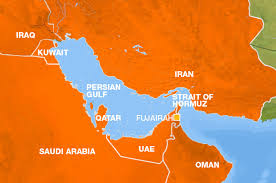
US, Russian French and British air and naval forces streamed to the Syrian and Iranian coasts over the weekend on guard for fresh developments at the two Middle East flashpoints.
The Russian carrier Admiral Kuznetsov anchored earlier than planned at Syria's Tartus port on the Mediterranean Sunday, Jan. 8, arriving together with the destroyer Admiral Chabanenko and frigateYaroslav Mudry.
To counter this movement, France consigned an air defense destroyer Forbin to the waters off Tartus.
DEBKAfile's military sources report a buildup in the last 48 hours of western naval forces opposite Iran in the Persian Gulf and Arabian Sea in readiness for Tehran to carry out its threat to close the Strait of Hormuz.
Britain has dispatched the HMS Daring, a Type 45 destroyer armed with new technology for shooting down missiles, to the Sea of Oman, due to arrive at the same time as the FrenchCharles de Gaulle aircraft carrier.
Our sources report too that Saturday, the giant RQ-4 Global Hawk UAV, took off from theUSS Stenning aircraft carrier for surveillance over the coasts of Iran. The Stennis and its strike group are cruising in the Sea of Oman at the entrance to the Strait of Hormuz after Tehran announced it would not be allowed to cross through.
This was the first time the US has deployed unmanned aerial vehicles over Iran since its RQ-170 stealth drone was shot down by Iran on Dec. 4. It was also the first time the huge drone was ordered to take off from an aircraft carrier for a Broad Aerial Maritime Surveillance Mission (BAMS).
US military sources reported Monday, Jan. 9 that the Global Hawk's mission is "to monitor sea traffic off the Iranian coast and the Straits of Hormuz." The US Navy was ordered to maintain a watch on this traffic, another first, after Iranian Navy chief Adm. Habibollah Sayyari said in a televised broadcast Sunday night that the Strait of Hormuz was under full Iranian control and had been for years.
Also Sunday, Army Gen. Martin Dempsey, Chairman of the US Chiefs of Staff, warned in no uncertain terms that Iran has the ability to block the Strait of Hormuz “for a period of time.” He added in a CBS interview: “We’ve invested in capabilities to ensure that if that happens, we can defeat that.” Gen. Dempsey went on to emphasize: "Yes, they can block it. We've described that as an intolerable act and it's not just intolerable for us, it's intolerable to the world. But we would take action and reopen the straits."
Appearing on the same program, US Defense Secretary Leon Panetta warned of a quick, decisive and very tough American response to any Iranian attempt to close the Strait of Hormuz.
They both spoke a few hours after a spokesman for the Revolutionary Guards said the supreme Iranian leadership had ruled the Strait must be closed in the event of an oil embargo imposed on Iran by the European Union.
DEBKAfile's military sources report the constant escalation of military tension around Iran and Syria in recent days as not just stemming from the rapid advances Iran is making toward production of a nuclear weapon, but from fears in the West and Israel that Tehran and Damascus are in step over their military plans for the Persian Gulf and Mediterranean sectors.
After the Admiral Kuznetsov docked in Tartus Sunday with much fanfare, the Syrian Navy commander Dawoud Rajha was received on the deck by a guard of honor of marines under a flyover of Russian Su-33 and Su-25 fighter-bombers. This was taken as a signal of Moscow's willingness to back the Assad regime up against any Western military intervention as well as a gesture of support for cooperation between Syria and Iran in their operational plans.
Sunday, the Iranian media issued divergent statements about the situation at Iran's underground uranium enrichment plant at Fordo, near Qom: In English, the site as described as going on stream soon, while the Farsi media reported it was already operational.
The head of Iran's Atomic Energy Organization Fereydoun Abbasi Davani declared furthermore," …the Islamic Republic is capable of exporting services related to nuclear energy to other countries."
This statement showed that Tehran has no fear of raising the level of its threats to the West up to the point of offering to hand out its nuclear technology to other countries in a gesture of uncontrolled proliferation.
Debka File
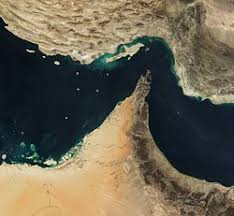
Iran has the ability to temporarily block the Strait of Hormuz but the U.S. “would take action and reopen” it,Joint Chiefs of Staff chairman General Martin Dempsey said Sunday, making clear to Iran that in threatening to close the straits, it is literally playing with fire. .
“They’ve invested in capabilities that could, in fact, for a period of time block the Strait of Hormuz,” Dempsey said in an interview for CBS's “Face the Nation."
“We’ve invested in capabilities to ensure that if that happens, we can defeat that.”
Blocking the strategic shipping lane linking the Gulf of Oman with the Persian Gulf would constitute a “red line” for the U.S., Defense Secretary Leon Panetta said on the same program.
He assessed that Iran is preparing groundwork for making nuclear weapons someday, but is not yet building an atomic bomb. He called for continued diplomatic and economic pressure to dissuade Tehran from taking that step.
Panetta warned that a unilateral strike by Israel against Iran’s nuclear facilities could trigger Iranian retaliation against U.S. forces in the region. “We have common cause here” with Israel, he said. “And the better approach is for us to work together.”
According to AP's analysis, Panetta’s remarks "suggest the White House’s assessment of Iran’s nuclear strategy has not changed in recent months, despite warnings from advocates of military action that time is running out to prevent Tehran from becoming a nuclear-armed state."
The Obama administration has come under attack from Republican presidential hopefuls for what they say is a soft approach to Iran. “If we re-elect Barack Obama, Iran will have a nuclear weapon,” said Mitt Romney. “And if you elect Mitt Romney, Iran will not have a nuclear weapon.”
Harutz Sheva

A hardline newspaper close to Iran's rulers says the country has begun uranium enrichment at a well-protected underground facility.
"Kayhan received reports yesterday that shows Iran has begun uranium enrichment at the Fordo facility amid heightened foreign enemy threats," the paper said in a front-page report. Kayhan's manager is a representative of Iran's Supreme Leader Ayatollah Ali Khamenei.
But Iran's nuclear chief Fereidoun Abbasi said late Saturday that his country will "soon" begin enrichment at Fordo. It was impossible to immediately reconcile the two reports.
Iran's main uranium enrichment site in Natanz in the center of the country is built partly underground, while the long-secret Fordo facility was built deep inside a mountain as a precaution from aerial attacks.
European diplomatic sources said on Friday that Iran was close to starting uranium enrichment at Fordow.
According to the sources, Iran has taken steps in recent weeks that bring it closer to launching uranium enrichment deep inside a mountain, a move that would worsen its nuclear confrontation with the West.
Tehran's top nuclear official said on Saturday that Iran's nuclear plant in Bushehr will reach full capacity by the end of the month, after claiming that the Islamic Republic was ready to export nuclear technology to friendly nations in Africa.
The Iranian official made the comments as Iranian President Mahmoud Ahmadinejad started a tour of South America on Sunday, in an attempt to tout some of Iran's few friendships while tensions grow over the country's threats to block oil shipments in retaliation for tighter U.S. sanctions.
Haaretz
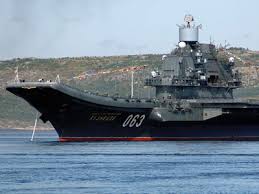
A large Russian naval force arrived at the Syrian port city of Tartus, the French AFP news agency reported on Sunday, in what the regime of President Bashar Assad is calling a show of "friendship."
Last November, a Syrian news agency reported that Russian warships were planned to arrive at Syrian territorial waters, indicating that the move represented a clear message to the West that Moscow would resist any foreign intervention in the country's civil unrest.
Citing the official Syrian news agency SANA on Sunday, AFP reported that a large Russian naval flotilla, led by an aircraft carrier, is making a six-day port call to Tartus. SANA also quoted a Russian naval officer as saying that the a visit was "aimed at bringing the two countries closer together and strengthening their ties of friendship."
"The commanders of the Russian naval vessels docked in Tartus took turns to express their solidarity with the Syrian people," SANA added.
The Russian visit came as the Arab League ruled out considering a withdrawal of its widely criticized peace observers from Syria, ahead of a meeting in Cairo to assess the performance of the mission.
Led by Qatar, an Arab League committee on Sunday was to review a report about the mission, which was dispatched two weeks ago to Syria to verify the Damascus government's compliance with a plan to end a violent crackdown on dissent.
According to leaked excerpts, the report cites continued violence by the Syrian government on pro-democracy protesters, Doha-based broadcaster Al Jazeera reported.
The report mentions that Syrian authorities hold detainees in unknown places, Al Jazeera said.
The Arab League's assistant chief, Adnan Eissa, said Saturday it was unlikely for the meeting to discuss the possibility of recalling the observers any time soon.
"No Arab country has talked about the necessity of withdrawing the observers," he told reporters in Cairo.
He said that the Arab countries were favoring more support for the observers and better equipping them to do their job.
The observer mission reached 163 members on Saturday, after 10 more colleagues from Jordan arrived, according to Eissa.
Meanwhile, Syrian activists say 11 soldiers and several civilians have died in clashes and attacks.
The British-based Syrian Observatory for Human Rights said fighting between government troops and military defectors in the town of Basr al-Harir in southern Daraa province Sunday killed 11 soldiers and wounded more than 20.
The Observatory and other activist networks reported several civilians killed in government raids in the central Homs region and eastern Deir el-Zour province. The number of civilians killed was not immediately clear and the reports could not be independently confirmed as Syria has barred most foreign journalists from the country.
Haaretz
The quake hit at a depth of 23 miles at about 3:00pm local time (4.00am GMT) some 220 miles east of Kirakira, the main city of the Solomons' major island, Makira.
The Hawaii-based Pacific Tsunami Warning Center said there was "no destructive widespread tsunami threat" based on historical data.
"However, earthquakes of this size sometimes generate local tsunamis that can be destructive along coasts located within a hundred kilometres of the earthquake epicentre," it added.
"Authorities in the region of the epicentre should be aware of this possibility and take appropriate action."
Clive Collins, a seismologist at Geoscience Australia, said the undersea tremor would have been felt strongly on the nearest islands, which are quite remote, but would not cause serious damage.
"It's not all that deep but it's not right at the surface and 6.6, I think the nearest island is about 70 or 80 kilometres away so they'll get a bit of a shake if there's a town or village or something on them, but I don't expect any real damage," Mr Collins said.
"It's probably quite deep ocean there so I don't think there's any chance of a tsunami threat from that, normally that size earthquake wouldn't produce a tsunami."
The Solomon Islands is on a tectonic plate margin in the so-called Pacific Ring of Fire and frequently sees earthquakes.
In 2007 a tsunami following an 8.1-magnitude earthquake killed at least 52 people in the Solomon Islands and left thousands homeless.
The Telegraph

The dire economic situation in which most of the rich world found itself in 2011 was not merely the result of impersonal economic forces, but was largely created by the policies pursued, or not pursued, by world leaders.
Indeed, the remarkable unanimity that prevailed in the first phase of the financial crisis that began in 2008, and which culminated in the $1 trillion (£645bn) rescue package put together for the London G20 meeting in April 2009, dissipated long ago. Now, bureaucratic infighting and misconceptions are rampant.
Worse still, policy disagreements are playing out more or less along national lines. The centre of fiscal conservatism is Germany, while Anglo-Saxon countries are still drawn to John Maynard Keynes. This division is complicating matters enormously, because close international co-operation is needed to correct the global imbalances that remain at the root of the crisis.
Doubts about sovereign debt in Europe have revolved around the euro to such an extent that some now question whether the single currency can survive. But the euro was an incomplete currency from the outset. The Maastricht treaty established a monetary union without a political union – a common central bank, but no common treasury. Its architects were aware of this deficiency, but other flaws in their design became apparent only after the crash of 2008.
The euro was built on the assumption that markets correct their own excesses, and that imbalances arise only in the public sector. As it happened, some of the largest imbalances that fuelled the current crisis arose in the private sector – and the euro's introduction was indirectly responsible.
In particular, sovereign debt in the eurozone was deemed riskless: banks had only to hold minimal reserves against member countries' bonds, which the European Central Bank accepted on equal terms at its discount window. Member countries could borrow at practically the same interest rate as Germany, and banks were happy to earn a few extra pennies by loading up their balance sheets with the government debt of the eurozone's weaker economies. For example, European banks hold more than a €1 trillion (£825bn) of Spanish debt, with German and French banks holding more than half of that sum.
Instead of the convergence prescribed by the Maastricht treaty, the radical narrowing of interest-rate differentials generated divergences in economic performance. Countries like Spain, Greece, and Ireland developed real-estate bubbles, grew faster, and developed trade deficits with the rest of the eurozone, while Germany – weighed down by the costs of reunification – reined in its labour costs, became more competitive and developed a chronic trade surplus.
The convergence of interest rates was broken when a newly elected government in Greece revealed that the deficit incurred by the previous government was much larger than had been reported. European authorities were slow to react, because member countries held radically different views.
Germany, traumatised by runaway inflation in the 1920s, and its dreadful political consequences, adamantly opposed any bailout. Moreover, it was heading into an election cycle, which increased the rigidity of its position. With German leaders insisting on charging penalty rates for providing assistance, the crisis festered – and the rescue costs continued to grow.
Indeed, as eurozone members' inability to print their own money effectively relegated them to the status of less-developed countries that must borrow in a foreign currency, risk premiums widened accordingly. The authorities, seeing no solution, kicked the can down the road – an approach that usually works, because problems become easier to solve when markets calm down. But, in this case, the crisis kept growing bigger, and the authorities ran out of road when Germany's constitutional court ruled out additional guarantees beyond the European financial stability facility (EFSF) without the consent of the Bundestag.
At the European Union's 9 December summit in Brussels, the eurozone countries agreed to establish a closer fiscal union. But, by the time this decision was taken, it was no longer sufficient to bring the financial crisis under control.
The measures introduced by the ECB went a long way toward relieving banks' liquidity problems, but nothing was done to reduce the large risk premiums on government bonds. Because the premiums are intimately interconnected with the banks' capital deficiencies, half a solution is not good enough. Unless the sovereign debt of the rest of the eurozone is successively ringfenced, a Greek default could cause a meltdown of the global financial system.
Even barring such a nightmare scenario in 2012, the summit sowed the seeds of future conflicts – over the emergence of a "two-speed" Europe and the false economic doctrine guiding the eurozone's proposed fiscal pact. That doctrine, by imposing austerity in a period of rising unemployment, threatens to push the eurozone into a vicious deflationary debt spiral from which it will be difficult to escape.
The Guardian
Growing debt levels in the developed world will continue to bolster gold into the foreseeable future, bringing with it the potential for the precious metal to eventually reach $10,000 an ounce, noted gold bull Nick Barisheff told a forum in Toronto.
The CEO of Bullion Management Group Inc. said that gold is now moving in lockstep with rising U.S. debt levels, and that given that debt levels continue to grow, support remains for gold to go much higher.
“Based on official estimates, America’s debt is projected to reach $23 trillion in 2015 and, if the correlation remains the same, the indicated gold price would be $2,600 per ounce,” he said according to a transcript of the speech. “However, if history is any example, it’s a safe bet that government expenditure estimates will be greatly exceeded, and the gold price will therefore be much higher.”
Mr. Barisheff illustrated the correlation between gold and debt in a graph during his presentation to the 18th Annual Empire Club Outlook Luncheon, shown below:

Mr. Barisheff did not give a timeline on when he expects gold prices to reach $10,000 (and judging from trends, it might not be for quite some time). But he is confident it will eventually get there.
“These events gave me the confidence to title my new book $10,000 Gold,” he said. “The book connects the many trends that will be directly and indirectly responsible for both the rising debt and the rising gold price over the next five years. It will be published this year.”
He adds that high gold prices will not only be the byproduct of rising government debt levels. Mr. Barisheff points out that central banks around the world have been net buyers of gold since 2009, helping to bolster prices. But the real game changers have yet to start buying on an equivalent level.
“While central banks have been net purchasers of gold since 2009, the real game changers will be the pension funds and insurance funds, which at this point hold only 0.3% of their vast assets in gold and mining shares,” he said.
He went on to add: “Continuing losses and growing pension deficits will make it mandatory for them to eventually include gold— the one asset class that is negatively correlated to financial assets such as stocks and bonds. When this happens, there will be a massive shift from over $200-trillion of global financial assets to the less than $2 trillion of privately held bullion.”
Financial Post

(Reuters) - A 50 percent write-down on Greek debt holdings, part of Greece's debt swap deal, is not enough to put the country's huge debt on a viable footing, an adviser to Germany's finance minister Wolfgang Schaeuble told a Greek newspaper.
Banks and investment funds have been negotiating with Athens for weeks on a bond swap scheme which aims at cutting Greece's debt-to-GDP ratio from 160 percent to a more manageable 120 percent by 2020 and is a key part of a second, 130 billion euro bailout package for the country without which it risks default.
Under the so-called "private sector involvement" (PSI), investors will voluntarily accept a nominal 50 percent discount on their Greek bond holdings in return for a mix of cash and new bonds. But talks have been held up by disagreements over the real cost of the haircut, through factors such as the coupon and maturity of the new bonds.
In an interview with To Vima's Sunday edition, Clemens Fuest, who is also an academic, said the Greek debt haircut should be higher than the agreed 50 percent to help Greece repay its debt.
"This (50 percent) rate was accompanied by the idea it would be associated with a long-term economic consolidation programme, which would reduce the accumulated debt to 120 percent of the annual gross domestic product in 2020," he said.
"But such a reduction is not enough. We had already (a debt of) 120 percent at the beginning of the crisis. So the reduction must be higher than 50 percent."
Greece wants investors to voluntarily sign up to the PSI to avoid triggering a credit event for the country but Fuest said this was putting the deal at risk and that the swap should be compulsive.
"To my view, Greece has already defaulted," he said. "I believe that the best thing would be if one honestly says that the Greek government cannot repay its debt. In such a way, a better settlement could be achieved."
Greece is racing against the clock to put in place long-delayed reforms and meet the terms of the European Union and the International Monetary Fund for continued funding ahead of a crucial visit of the "troika" of its international lenders in mid-January.
A Greek finance ministry official said last week the PSI scheme is expected to be completed around mid-January so that Greece could then conclude the negotiations on the terms of its second bailout. [ID:nL6E8C54JR]
But Fuest warned that the PSI by itself could not help Greece unless it reformed its economy and did not rule out the nation quitting the euro, saying: "I only hope this won't happen."
Echoing Fuest's remarks, Deutsche Bank Chief Economist Thomas Mayer told another Greek newspaper that Greece should put its finances in order to stay in the euro zone.
"Even after the (debt) restructuring, the prospects for the Greek debt remain a big challenge," Mayer told Real News. "It is clear that only a comprehensive programme of economic reforms can save Greece from exiting the euro."

The jobless rate in the 17 nations that use the euro was 10.3% in November for the second month in a row, according to the Eurostat statistics agency.
There were 16.3 million people in the bloc out of work.
At the same time, an index of consumer confidence fell to a two-year low in December, the European Commission said.
The economic sentiment indicator fell 0.5 to 93.3 in December, which was well below the long-term average of 100, the Commission said.
Howard Archer, an economist at IHS Global Insight, said that the data suggested that Europe's economy had contracted in the last three months of 2011.
"Tighter fiscal policy, squeezed consumers, the seemingly never-ending eurozone sovereign debt crisis, weakened global growth and financial market turmoil are taking a serious toll on economic activity across the eurozone," he said.
Spain's unemployment rate was highest at 22.9%, accounting for more than a quarter of the total eurozone unemployment figure.
Spain's rate was more than four times as high as in Austria, for example, where only 4% of people were jobless.
For the whole of the European Union, which includes countries such as the UK and Sweden that do not use the euro, the unemployment rate was 9.8%.
Separately, Eurostat said that eurozone retail sales fell 2.5% in November, compared with the same month the previous year.
The steepest declines were in Portugal, which was bailed out last April, where sales fell 9.2% from a year earlier.
But there were also declines in the richer, northern European countries that are lifting eurozone growth, with Germany and the Netherlands both seeing declining retail sales.
BBC
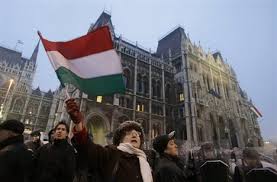
Fitch has become the third ratings agency to cut Hungary's credit rating to junk status.
The agency blamed "unorthodox policies" for its decision to cut the country's rating from BBB- to BB+.
Hungary's centre-right government has been accused of undermining the central bank's independence and imposing losses on the country's foreign-owned banks.
The country is attempting to resolve a stand-off with the International Monetary Fund over a new loan facility.
One of the biggest challenges facing the country is the large amount of foreign-currency mortgages, particularly those denominated in Swiss francs, which have been taken out by home-buyers in recent years.
Hungarians were attracted by the cheap interest rates available, but face impossible debt repayments as the Hungarian forint loses value.
"The downgrade of Hungary's ratings reflects further deterioration in the country's fiscal and external financing environment and growth outlook, caused in part by further unorthodox economic policies, which are undermining investor confidence and complicating the agreement of a new IMF/EU deal," said Matteo Napolitano of Fitch's sovereign ratings division.
The Hungarian government has sought to agree a standby facility with the IMF, but talks broke down over a new law that strengthened the government's control of the Hungarian central bank's governing board.
Fitch follows Moody's and Standard & Poor's, which also cut their ratings for Hungary to junk levels in recent weeks.
BBC

There is a sleeping super volcano in Europe, and it isn't in Italy (a country famous for its eruptions). This giant is located under the Laacher See, a caldera lake in Germany, and it is showing signs of life. Should it erupt, it could spew billions of tons of magma as far as 620 square miles. Update inside.
Editor's Note: As pointed out in the comments below, Laacher See's volcano is probably not the threat it's perceived to be. Erik Klemetti called the news spread by the Daily Mail"fearmongering" and went on to debunk it in his Wired article here. It's definitely worth a read. Our original article follows, but it's best read with Klemetti's clarifications in mind.
The Laacher See volcano is thought to erupt every 12,000 years or so, and it last went off 12,900 years ago. It's been giving scientists subtle hints: some seismic tremors recorded in the region in February, and the somewhat disturbing release of carbon dioxide bubbles into the lake. This bubbling is referred to as "de-gassing," which comes from the magma chamber.
What could happen if the sleeping giant decides to blow? The Lacher See volcano is believed to be the size of the Philippines' Mt. Pinatubo that erupted in 1991 and was the biggest eruption of the 20th century.
Mt. Pinatubo ejected 10 billion tons of magma, 20 billion tons of sulphur dioxide and nearly four cubic miles of ash, and caused a 0.5 Celsius drop in global temperatures. So remember that Icelandic quake that disrupted travel for a few weeks? You can forget that. Think bigger.
Scientists say the last time the Lacher See erupted, it covered 620 square miles of land with ash and rocks and the remnants can be found all around Europe today. At the very least with a new eruption there would be mass destruction and an ash cloud that could cause short term global cooling.
So what should Europe do to prepare? Scientists are taking a wait and see attitude as they closely monitor the signs of life under the lake. With today's technology hopefully there would be ample warning before a catastrophic eruption to avoid widespread loss of life.
It may be helpful, however, to review the do's and don'ts learned when Pompeii erupted to make sure there are viable escape plans. Here's hoping today's technology gives us an advantage!
Dvice
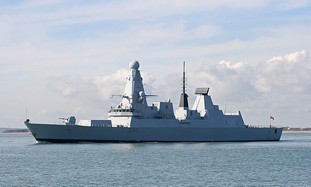
The UK is sending its most powerful naval vessel to the Gulf to counter any potentialIranian attempt to close the Strait of Hormuz, the Daily Telegraph reported Friday. The ship, a Type 45 destroyer named HMS Daring, will depart from Portsmouth on Wednesday and is set to arrive in the Gulf by the end of January. It is capable of shooting down "any missile in Iran's armory," according to the Telegraph.
The report came just two days after Defense Secretary Philip Hammond declared that his country would take military action against Iran if it carries out its threat to block the Strait of Hormuz. While on a visit in Washington DC. Hammond warned that any attempt by Iran to close the Strait would be "illegal and unsuccessful", adding that the Royal Navy would participate in efforts to ensure the free flow of traffic in the waterway.
“Our joint naval presence in the Arabian Gulf, something our regional partners appreciate, is key to keeping the Straits of Hormuz open for international trade,” Hammond stated.
“Disruption to the flow of oil through the Straits of Hormuz would threaten regional and global economic growth,” he said, arguing that “it is in all our interests that the arteries of global trade are kept free, open and running.”
The UK ship being sent to the Gulf carries the world's most sophisticated naval radar, capable of tracking multiple incoming threats from missiles to fighter jets, the Telegraph reported. The 8,000 ton destroyer will carry 48 Sea Viper anti-air missile systems, capable of intercepting fighters as well as sea-skimming missiles. It will also host a Lynx helicopter capable of carrying Sea Skua anti-ship missiles, according to the Telegraph.
The British daily cited UK Naval commanders who said that the ship's deployment will send a significant message to the Iranians because of its firepower and "world-beating" technology.
A British Ministry of Defense spokesman was quoted by the Telegraph as saying that "while the newly operational Type 45 destroyer HMS Daring is more capable than earlier ships, her deployment East of Suez has been long planned, is entirely routine and replaces a frigate on station."
In late December, Iran threatened to block the strait if sanctions are imposed on its crude-oil exports. Europe and the United States have stepped up sanctions the Islamic republic in recent weeks in an attempt to force it to abandon its nuclear program.
The Western action has already hit Iran's rial currency, which fell by 40 percent against the dollar in the past month. It recently recovered 20% of its value through intervention by Iran's Central Bank.
Western powers are discussing other contingency plans for a potential Iranian closure of the strait, including one to tap a record volume of oil from emergency stockpiles to replace what would be lost if in case of an Iranian closure. It is estimated that the proposal, which would release up to 14 million barrels per day (bpd) of government-owned oil stored in the United States, Europe, Japan and other importers, could be sustained during the first month of any coordinated action.
Iran recently concluded a ten-day naval drill, during which it test fired two long-range missiles. Iran said that it was using the test to display its resolve in countering any attack by enemies such as Israel or the United States. Revolutionary Guards Corps will holdnew naval exercises in the Strait of Hormuz in February, an Iranian military commander was quoted as saying.
